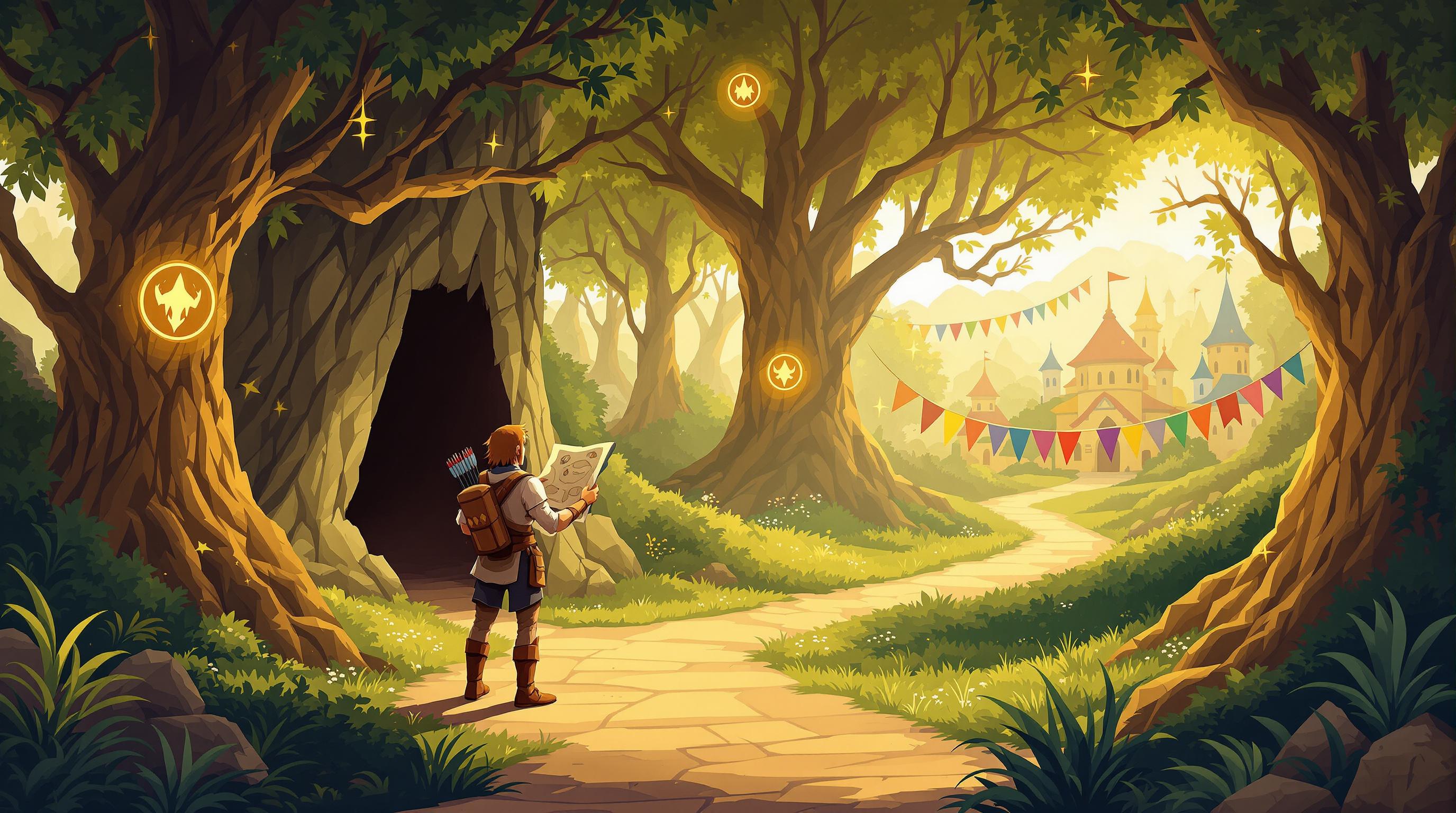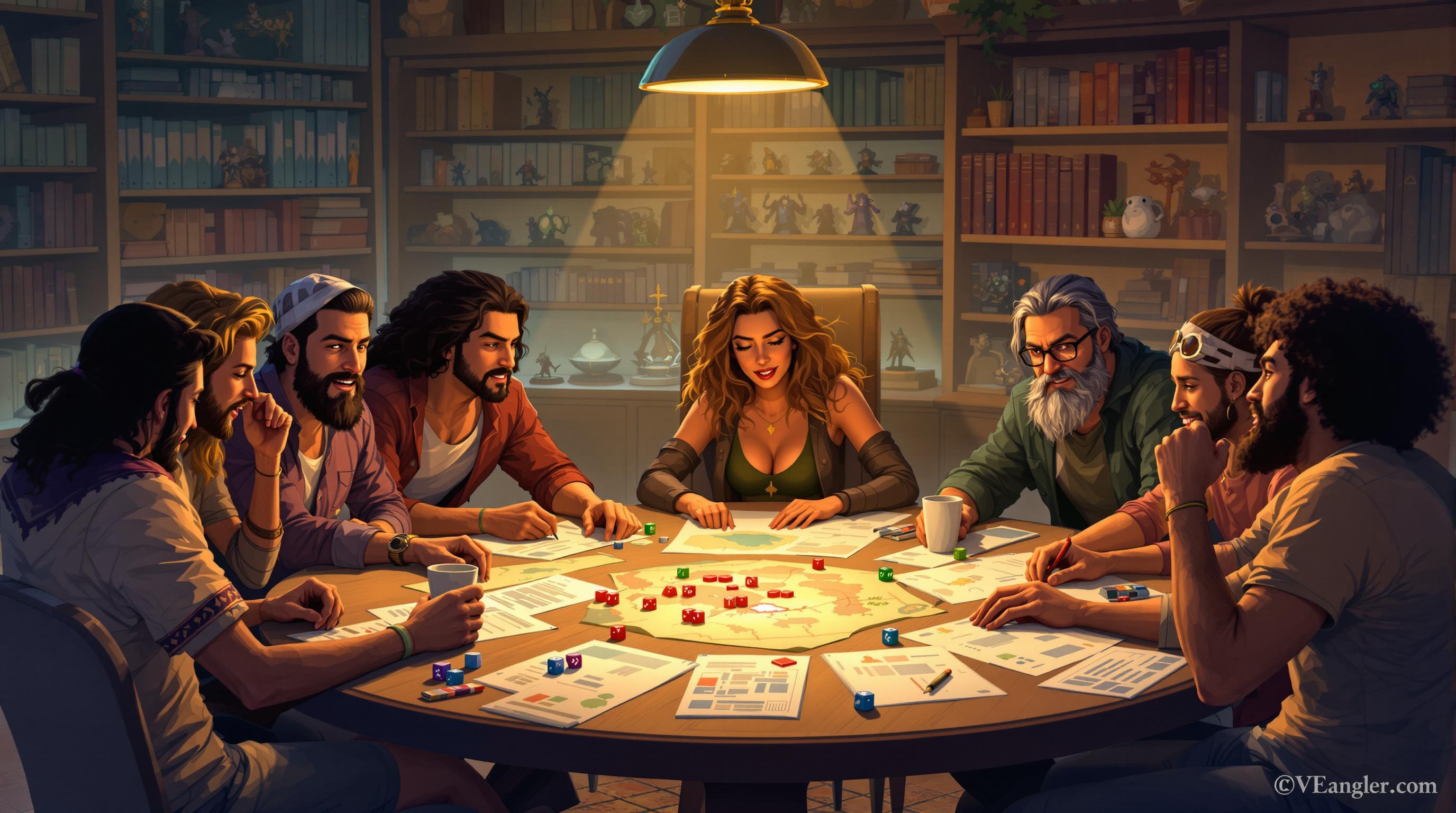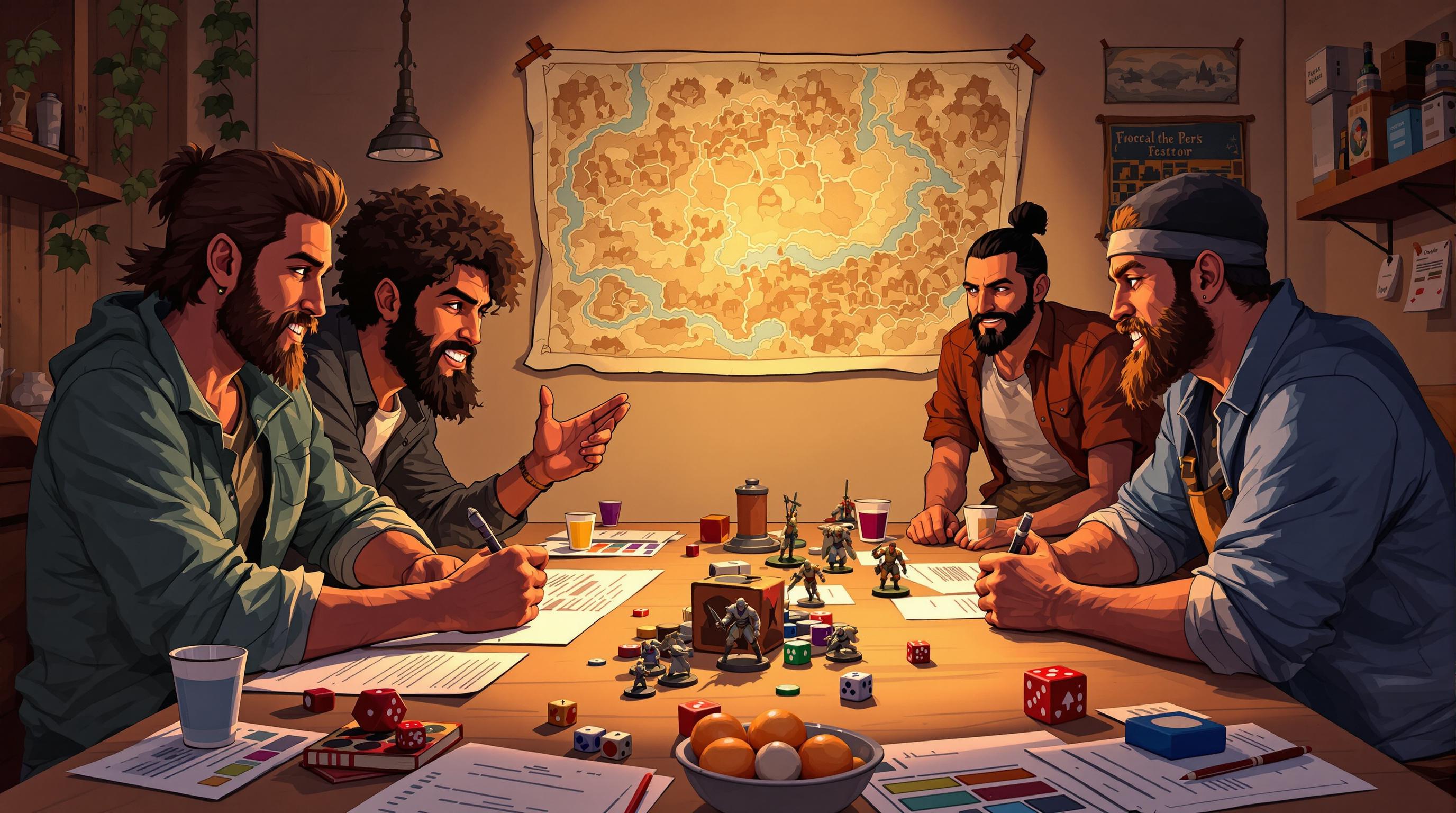- What Are Plot Twists?: Surprising developments that shake up the story and keep players engaged.
- Why They Matter: Add depth, drama, and emotional impact to your tabletop RPG campaigns.
- Challenges: Timing, believability, and player agency are critical. Twists must feel earned and logical.
- Types of Twists:
- Revealing Secrets: Hidden truths that redefine the story.
- Betrayals: Trusted allies turning against the party.
- Villains with Complex Motives: Antagonists who challenge moral assumptions.
- How to Create Effective Twists:
- Use subtle clues to set up surprises.
- Balance shock with logic for satisfying reveals.
- Time twists during pivotal story moments.
- Advanced Techniques:
- Player-Driven Twists: Let player choices shape the story.
- Layered Twists: Interconnected reveals that deepen the plot.
- World-Based Twists: Use the game environment to deliver surprises.
Want twists that players will never forget? Focus on logical setups, subtle foreshadowing, and letting player decisions shape the narrative. Ready to dive deeper? Keep reading for detailed tips and examples.
Creating Plot Twist Ideas on the Fly - RPG Storytelling Tips
Types of Plot Twists for RPGs
Plot twists in RPG campaigns can take many forms, each adding depth to the story and keeping players hooked. Here’s a closer look at some of the most impactful types and how they can elevate your storytelling.
Revealing Secrets
Secrets can completely shift the direction of a campaign. These twists work by exposing hidden truths that change how players view the story and their characters' roles. The trick is to plant small hints throughout the campaign - details that seem minor at first but take on new meaning later. For example, uncovering a prophecy about a character's true heritage at a pivotal moment can redefine their purpose in the narrative. To make these revelations work, balance them with player choices so they feel natural but still pack a punch.
Betrayals in the Story
Betrayals force players to question their relationships with key NPCs. The most impactful betrayals come from characters the party has come to trust. These twists are most effective when the traitor’s actions are rooted in their established backstory and motivations, even if those motivations weren’t obvious before.
"A betrayal could be foreshadowed through subtle changes in the character's behavior or dialogue" [1][5]
Key ingredients for a strong betrayal include realistic motives, subtle hints, and a meaningful connection to the main plot. Drop small clues - like shifts in behavior or cryptic remarks - so the reveal feels both surprising and inevitable. And make sure the betrayal ties into major story elements to maximize its emotional impact.
Villains with Surprising Motives
A villain with unexpected motives can turn a straightforward conflict into a morally complex challenge. Design antagonists with layered backstories, relatable goals, or unexpected ties to the party. Their motivations should make players second-guess their assumptions while staying consistent with the narrative. These twists work best when they’re logical but still manage to catch players off guard.
With these ideas in mind, you’ll be better equipped to craft plot twists that keep players engaged and the story flowing seamlessly.
Steps to Create Strong Plot Twists
Balancing Surprise and Logic
Crafting impactful plot twists means striking the right balance between shock value and logical progression. A good twist should make earlier story elements take on new significance once revealed. These revelations should naturally stem from prior events, even if their importance wasn’t initially obvious. This approach not only keeps the story cohesive but also respects player choices, ensuring twists feel earned rather than random.
"Creating a plot twist is as simple as choosing one or more of the key facts and replacing them with something different, while retaining the overall structure of the story." - Mike Bourke, Campaign Mastery [4]
Using Clues Without Giving Away the Twist
Subtle hints are key to a successful twist. The trick is to make them noticeable enough to stick in the players' minds without spoiling the surprise.
| Clue Type | How to Use |
|---|---|
| Environmental | Add odd details in locations that only make sense after the twist unfolds |
| Dialogue | Let NPCs make offhand comments that later reveal hidden meanings |
| Item-based | Introduce objects whose true purpose becomes clear after the big reveal |
Spread these clues across several sessions rather than clustering them together. This spacing keeps players from piecing things together too quickly while ensuring they have those satisfying "aha!" moments later.
When to Introduce Plot Twists
Timing is everything. Reveal twists during moments when players are focused but not overwhelmed by other story developments. Ideal opportunities include after major victories, during pivotal character moments, or at the end of a quest. For example, uncovering a trusted NPC’s betrayal right after the party completes a critical mission can completely shift the campaign’s tone.
The most memorable twists don’t just shock - they align with the story’s themes and deepen its impact. When done right, these moments stick with players, sparking conversations long after the session ends. Once you’ve nailed the basics, you can experiment with more advanced techniques to make your storytelling even more compelling.
sbb-itb-b8b00a5
Advanced Plot Twist Techniques
Player-Driven Twists
Let the story evolve naturally from player choices instead of forcing plot points. By keeping track of key decisions, you can create twists that feel authentic and earned. For example, alliances or betrayals among characters can uncover hidden layers of the plot, leading to moments that feel personal and impactful.
Here are a few elements to monitor across sessions to shape organic twists:
- Character relationships: Shifts in alliances or rivalries.
- Creative problem-solving: Unforeseen player strategies that alter the narrative.
- Key decisions: Choices that ripple through the story.
- Character growth: Moments that redefine a character’s role or motivations.
While player-driven twists bring personal stakes into the story, combining them with layered twists can add even more depth.
Layered Twists
Layered twists are all about interconnected reveals. Each discovery should answer one question while opening up another, pulling players deeper into the story. This approach creates a web of intrigue that keeps players guessing.
"To create layered twists, game masters can use techniques such as nested secrets, where each revelation leads to another mystery, or by introducing multiple plot threads that intersect and complicate each other." [4]
A great example of this is found in Yakuza 6: The Song Of Life. The character Toru Hirose’s true role is revealed piece by piece, with each new detail reshaping how players view earlier events [2][3].
Using the Game World for Twists
The game world itself can be a powerful tool for delivering unexpected turns. Environmental elements can surprise players and deepen their connection to the story.
- Locations: A tranquil setting might hide dark secrets or undergo a dramatic transformation, shifting its role in the narrative.
- Artifacts: Objects with hidden properties can gain new importance, altering how players perceive the story.
- Local traditions: Folklore or cultural practices might hold key clues to unraveling current events.
These twists should feel like a natural part of the world while enriching the players' understanding of it. By weaving surprises into the environment, you can create moments that are both unexpected and immersive.
Resources for Plot Twist Ideas
Exploring TTRPG Games Directory

The TTRPG Games Directory is a goldmine for game masters, offering a wide range of RPGs with unique storytelling and gameplay mechanics. It’s a great tool for sparking ideas for plot twists. By browsing the directory, you can discover how different systems handle twists and borrow creative elements from indie games to enhance your campaign.
For example, a horror RPG's sanity mechanic might inspire a psychological twist, while a mystery game’s clue-based system could help you craft a more engaging storyline. The directory’s detailed game descriptions make it easy to pick up new narrative techniques and mechanics.
Online Communities and Storytelling Resources
Online forums and guides are packed with practical advice for crafting twists, testing ideas, and improving your narrative skills. Here are some platforms worth checking out:
| Platform | Best For |
|---|---|
| r/LFG | Testing plot ideas with groups |
| r/DnD | Sharing experiences and gathering feedback |
| Writing Like a Boss | Learning about twist structures |
| Errant Dreams | Advanced storytelling techniques |
"To create effective plot twists, game masters should ensure that surprises are both unexpected and logical, incorporating subtle hints throughout the story without making the outcome obvious" [3][4]
Campaign Mastery also provides step-by-step guides on twists like hidden figures and layered mysteries. These resources delve into why twists work, helping you adapt them to your own campaign. By mastering these techniques, you can make every twist land perfectly, leaving a lasting impression on your players.
Summary and Final Thoughts
Key Tips for Plot Twists
Crafting memorable plot twists requires careful planning and execution. As Mike Mearls from Wizards of the Coast puts it:
"A good plot twist should be surprising, yet logical in retrospect" [3]
Here’s a quick overview of the key elements that make plot twists work:
| Element | Strategy | Impact |
|---|---|---|
| Timing | Introduce twists at pivotal moments | Heightens emotional stakes |
| Foreshadowing | Add subtle hints throughout the story | Makes reveals more rewarding |
| Player Agency | Allow player choices to influence outcomes | Boosts engagement |
| World Building | Connect twists to the game’s lore | Strengthens story consistency |
These elements build on earlier discussions about layered twists and player-driven narratives. Foreshadowing, in particular, creates those satisfying "aha" moments that players love.
Encouragement to Try New Ideas
As you grow more confident, try experimenting with different twist styles - whether it’s a simple reveal, a layered mystery, or a twist shaped by player actions. Classic games like Chrono Trigger have shown how dramatic twists can elevate storytelling [2].
"To create effective plot twists, game masters should ensure that surprises are both unexpected and logical, incorporating subtle hints throughout the story without making the outcome obvious" [3][4]
Pay attention to how your players react, and adapt as needed. Focus on twists that deepen the story and keep everyone engaged. By staying open to new ideas and adjusting to the flow of your game, you can create moments that leave a lasting impression on your players.


